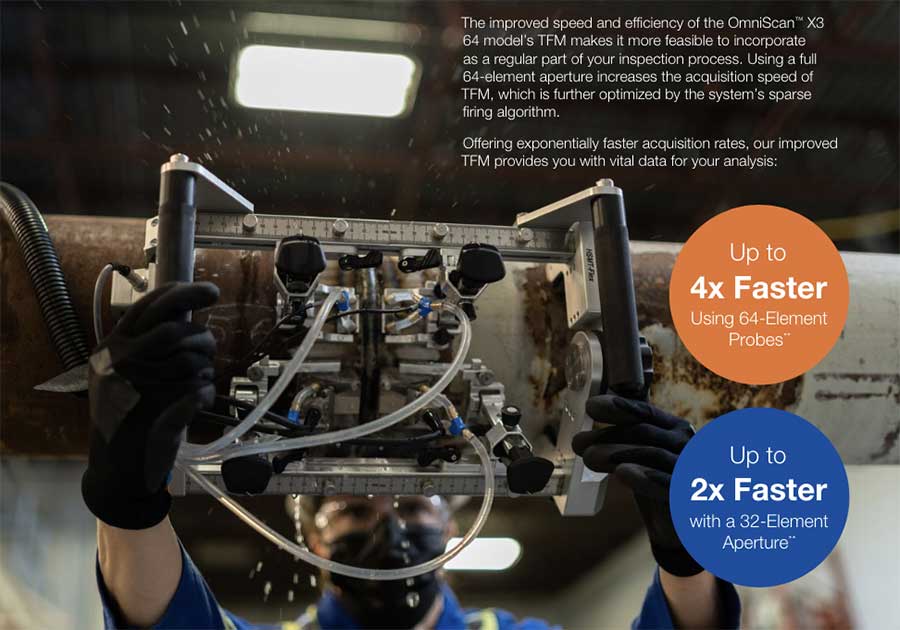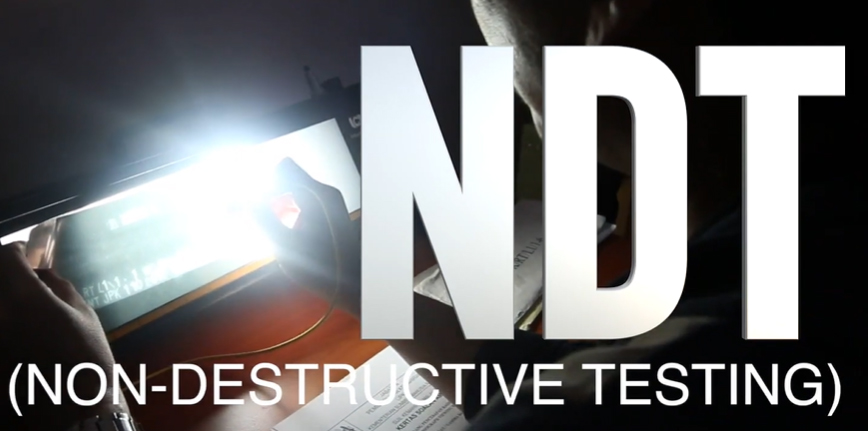NDT stands for Non-Destructive Testing. It is a set of techniques used to evaluate the properties, integrity, or composition of materials, components, or systems without causing damage to the object being tested.
NDT methods are widely used in various industries, such as aerospace, automotive, oil and gas, and power generation, to inspect and ensure the quality and safety of their products. Common NDT methods include ultrasonic testing, radiographic testing, magnetic particle testing, and eddy current testing, among others.

NDT equipment refers to the various instruments and devices used in Non-Destructive Testing (NDT), a set of techniques for evaluating the properties, integrity, or composition of materials, components, or systems without causing damage to the object being tested. NDT equipment is designed to detect flaws, discontinuities, or other abnormalities in materials or components using different physical principles without causing any harm to their structure or function. NDT equipment plays a crucial role in various industries, including aerospace, automotive, oil and gas, and power generation, where it is used to inspect and ensure the quality and safety of products.
How does NDT equipment work?
Non-Destructive Testing (NDT) equipment works by applying various physical principles to inspect materials or components for defects, discontinuities, or other abnormalities without causing damage. Here’s a brief overview of how some common NDT equipment works:
- Ultrasonic Testing (UT) Equipment: Ultrasonic testing equipment generates high-frequency sound waves, which are transmitted into the material being tested. When these sound waves encounter a defect or boundary within the material, they reflect or scatter, creating an echo. The ultrasonic flaw detector measures the time it takes for the echo to return, which can be used to determine the location and size of the defect. The equipment also converts the received signals into visual data displayed on a screen for analysis.
- Radiographic Testing (RT) Equipment: Radiographic testing equipment uses X-rays or gamma rays to penetrate the material being inspected. The radiation is absorbed or transmitted by the material, with denser or thicker areas absorbing more radiation. A detector, such as a radiographic film or digital imaging system, is placed on the opposite side of the material to capture the transmitted radiation, creating an image that shows variations in material density or thickness. Defects or discontinuities are visible as contrasting areas on the image.
- Magnetic Particle Testing (MT) Equipment: In magnetic particle testing, the equipment magnetizes the ferromagnetic material, creating a magnetic field. When a surface or near-surface defect is present, the magnetic field is distorted, causing magnetic particles to accumulate at the defect location. The particles can be visible or fluorescent, and their accumulation makes the defect visible to the inspector.
- Liquid Penetrant Testing (PT) Equipment: The penetrant material, which has high surface wetting characteristics, is applied to the surface of the component being tested. The penetrant seeps into surface-breaking defects, such as cracks or porosity. After a specific dwell time, the excess penetrant is removed, and a developer is applied, which helps draw the penetrant out of the flaw, making it visible. Fluorescent penetrants require UV light to enhance visibility.
- Eddy Current Testing (ET) Equipment: Eddy current testing involves inducing an alternating magnetic field in a conductive material using a probe coil. The interaction between the magnetic field and the material generates eddy currents in the material, which, in turn, produce their own magnetic fields. The presence of defects or changes in material properties alters the eddy current flow, causing a change in the detected magnetic field. The equipment measures these changes, which can be used to identify defects or material properties.
- Visual Testing (VT) Equipment: Visual testing equipment aids direct observation or enhances the inspector’s ability to see surface defects, discontinuities, or other anomalies. Tools such as magnifying glasses, flashlights, or borescopes provide additional illumination, magnification, or access to remote or confined areas.
- Acoustic Emission Testing (AET) Equipment: Acoustic emission equipment detects stress waves generated by sudden structural changes, such as crack growth or deformation. The equipment’s sensors are placed on the component’s surface, where they capture these stress waves and convert them into electrical signals. These signals are then analyzed to determine the source, location, and severity of the structural change.
- Thermographic Testing (TT) Equipment: Infrared cameras used in thermographic testing detect infrared radiation emitted by the surface of the material or component being tested. Temperature differences on the surface can indicate subsurface defects, as they affect heat flow in the material. The equipment creates a thermal image that displays temperature variations, which can be analyzed to identify defects or other anomalies.
Each NDT method and its corresponding equipment rely on specific physical principles to detect and analyze defects or discontinuities in materials
Applications of NDT test in various industries
Non-Destructive Testing (NDT) has a wide range of applications across various industries due to its ability to evaluate the properties, integrity, and composition of materials, components, or systems without causing damage. Some of the key applications of NDT include:
- Aerospace Industry: NDT is critical in the inspection of aircraft components, such as engines, wings, fuselage, and landing gear, to ensure structural integrity, identify defects, and maintain overall safety.
- Automotive Industry: NDT techniques are used to inspect automotive components like engine blocks, transmission systems, and chassis for flaws, defects, or fatigue, ensuring quality, reliability, and safety.
- Oil and Gas Industry: NDT is widely used in the inspection of pipelines, storage tanks, pressure vessels, and other equipment to detect corrosion, cracks, or other defects that could lead to leaks or catastrophic failures.
- Power Generation: NDT plays a crucial role in the inspection and maintenance of power plants, including nuclear reactors, wind turbines, and solar panels. It helps identify defects in components and structures, ensuring the safe and efficient operation of power generation facilities.
- Construction and Infrastructure: NDT techniques are used to inspect bridges, buildings, tunnels, and other structures for signs of wear, corrosion, and fatigue, ensuring structural integrity and public safety.
- Railways: NDT is used to inspect railway tracks, wheels, axles, and other components to detect cracks, wear, and other defects that could compromise the safe operation of trains.
- Marine Industry: NDT is applied to inspect ship hulls, propellers, and other structural components for defects or signs of wear, ensuring the safe and efficient operation of vessels.
- Manufacturing: NDT is employed in various manufacturing processes to inspect raw materials, monitor production processes, and assess the quality of finished products, such as castings, forgings, and welded structures.
- Chemical and Petrochemical Industry: NDT is used to inspect pressure vessels, heat exchangers, and other equipment for defects, corrosion, or other issues that could compromise safety and efficiency.
- Art and Cultural Heritage Preservation: NDT techniques are employed to examine artifacts, sculptures, paintings, and other cultural heritage objects without causing damage, helping to preserve and restore valuable historical items.
These applications are just a few examples of how NDT plays a critical role in ensuring the quality, safety, and reliability of various products and structures across numerous industries.
